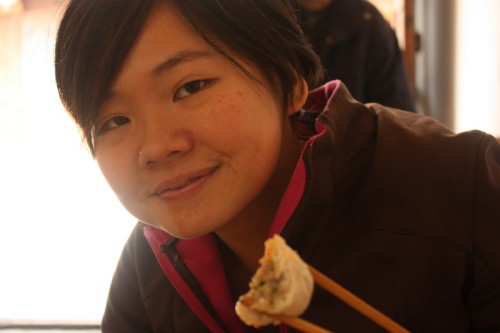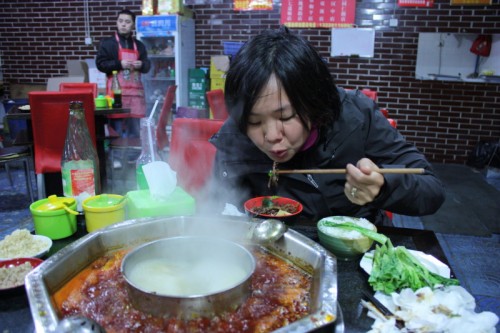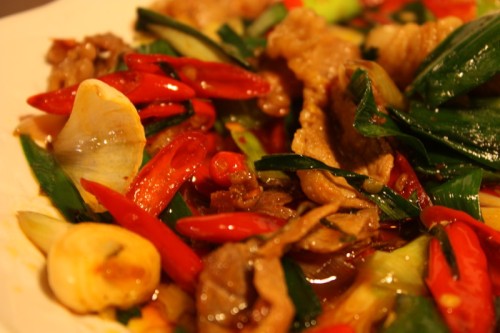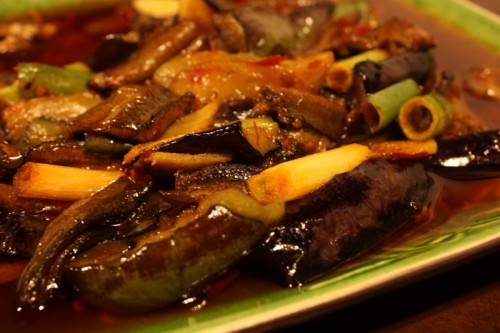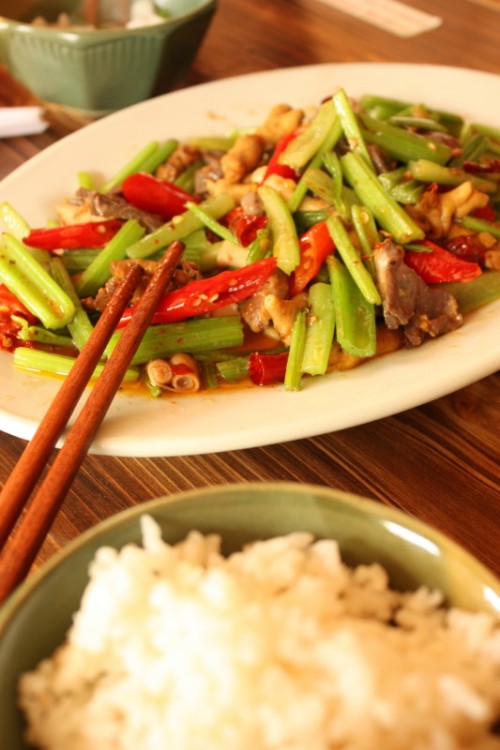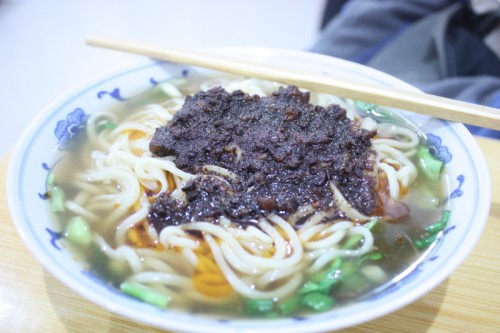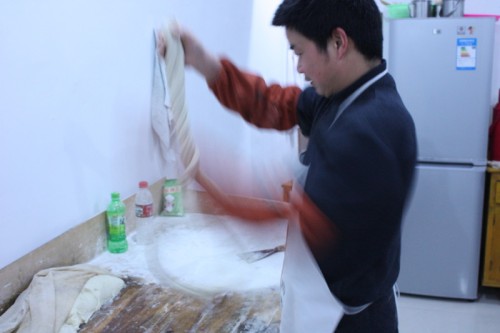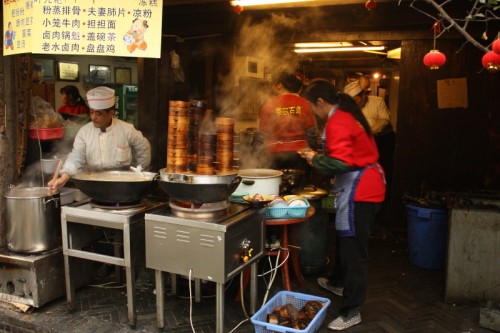So we arrived in a big giant puddle in the parking lot of Jiuzhaigou and we had no idea what to expect. By far the best aspect of our visit was Zhuo Ma’s Tibetan homestay. Beyond the park itself, it made the 11 hour bus ride, fighting with hordes of domestic tourists, and my cold toes all worth it. We yet again found this homestay through an article we found on the internet (do you see a pattern here?), and it sounded right up our alley – we wanted to meet people that actually lived there and experience the local culture. We got that and a whole lot more!
Zhuo Ma is one of the most amazing people that I’ve ever met. She left her small village in Jiuzhaigou when she was only seventeen for Beijing without speaking any Chinese. She stayed for a few years, learned Chinese perfectly, came back to Jiuzhaigou and opened an acclaimed Tibetan restaurant with her brother. On top of that, she started the homestay last year and we happened to stumble in on it. With all of these accomplishments you’d think that she wouldn’t have time for anyone, but she is the total opposite – she is so humble, warm and generous. When we arrived, she invited us in, sat us down right next to the big stove and immediately gave us steaming cups of yak butter tea. And kept them filled the entire time we were there! And even though she was hosting a party that weekend, she went out of her way to help arrange our travels and to make us feel at home.
We really did feel like we were part of the family. She and her mother took turns in the kitchen, cooking up enormous and tasty Tibetan meals (yak, preserved vegetables, fresh vegetables, potatoes. Yum!), and we sat together and ate and drank lots of yak butter tea. We watched Losan, Zhuo Ma’s two year old nephew, run around and we’d play with him for a bit. We had friendly exchanges with cousins, relatives and neighbors who dropped by. We also chatted with Zhuo Ma about her life, the goings on in the village and why she wanted to have a homestay. For her, it’s so important to show visitors the other side to Jiuzhaigou. Many people who visit only see a very superficial, packaged version of Tibetan life if they do at all – basically tawdry “ethnic” performances geared to titillate rather than educate. Realizing that Jiuzhaigou was first and foremost a Tibetan area and seeing the economic and social reality for Tibetans colored our experience in a very different way than if we had stayed in a bland hotel in town.
The other advantage to staying with Zhuo Ma was the amazing landscape. We walked on the yak/sheep paths up the mountain and the views were spectacular. When we were high enough, we could see down into the next valley and the snow-capped peaks loomed over us. At night, we’d burrow under the warmest blankets ever to keep out the mountain cold. And when we woke up, we threw open the bedroom window to a view of Tibetan prayer flags, wooden houses, and craggy mountains in the distance.
There was also a flurry of activity happening at the house, which we also enjoyed. It turned out that the weekend party was for Zhuo Ma’s friend Kieran, an Irishman who works for the national park. People were coming from far and wide for the party, so we met all manner of ex-pats. Some were traveling through, others settled in Chengdu, and some were short term researchers in Jiuzhaigou. So we heard about their experiences of living in China and how it can be both rewarding and frustrating at the same time. One guy said he had to be glued to his mobile phone playing solitaire whenever he was a passenger in a car because if he paid attention to the way people drive he’d go insane.
After a few short days, Zhuo Ma gave us big hugs and we set out for a (very) long journey to Shanghai.
